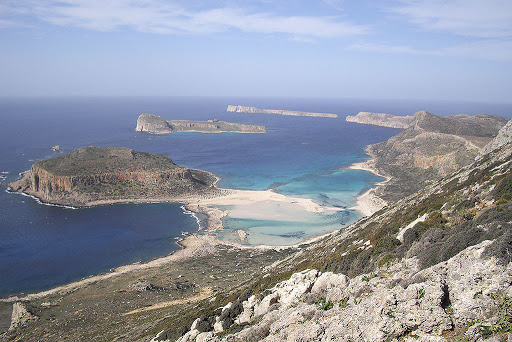
Balos lagoon, is located in Gramvousa peninsula at the northwestern tip of Crete, between Gramvousa and the rocky peninsula Tigani. It is characterized by shallow waters and white sand, which in some places is pink due to the crushed shells and corals and consists of rocky carbonate rocks.
Between Tigani and Gramvousa peninsula, is formed Balos lagoon, which is open on its southwestern side and forms a natural port, protected by Imeri Gramvousa.
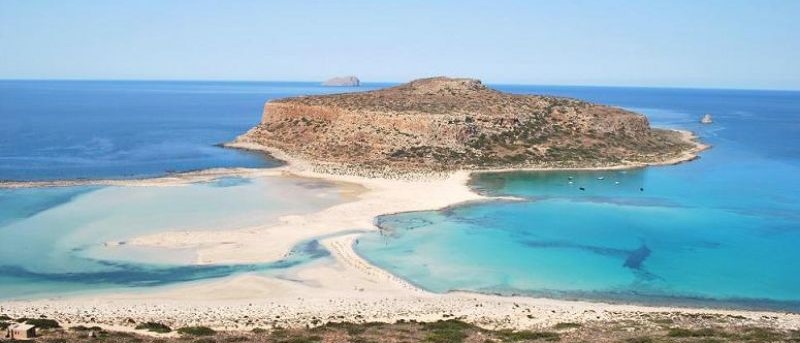
At cape Tigani, you can visit the church of Agion Panton, but also the cavern which is located on the north side, where many women and children who had taken refuge to hide from the Ottomans, who in 1825 had begun massacres of Christians in the area and were tragically killed.
Today, a memorial has been placed at the spot where the bones of the victims were found, while a memorial service is held on Agion Panton Day.
The castle of Gramvousa
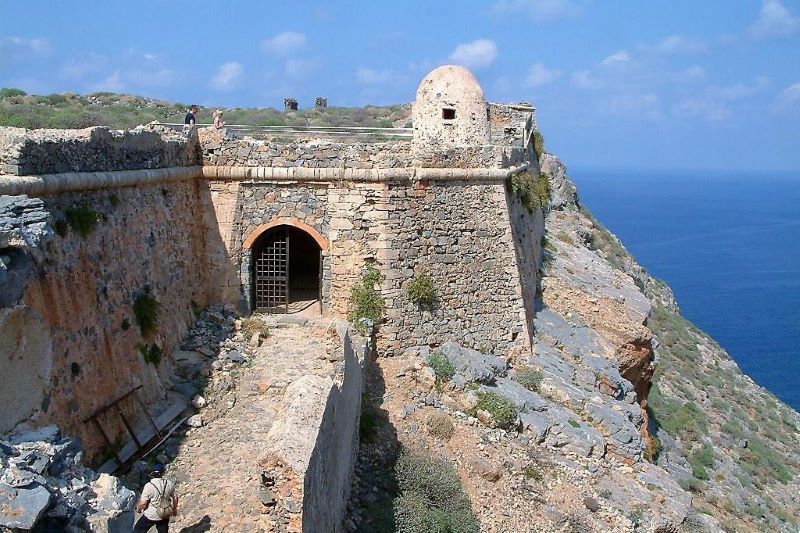 The castle of Gramvousa, was built in the 16th century by the Venetians, while its location, enabled its holders to control and monitor the strait formed, between western Crete and Peloponnese.
The castle of Gramvousa, was built in the 16th century by the Venetians, while its location, enabled its holders to control and monitor the strait formed, between western Crete and Peloponnese.Eventually, the Venetians failed to prevent the occupation of Crete by the Turks and so in 1645, the Turks after a short siege occupied Chania, while in 1669 the conquest of Crete was completed.
The Venetians, with the treaty of Morozini, managed to keep the castle of Gramvousa, hoping that they will regain control of Crete later in time.
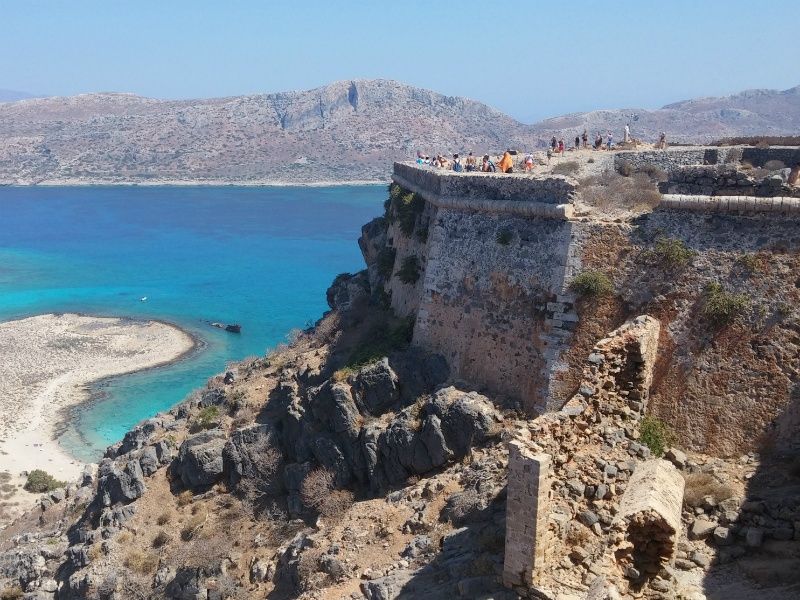
Gramvousa served as a base for the Venetians, in the deceptive attempt to retake Crete, but also as base and refuge for Cretan fighters.
Unfortunately, this castle was handed over in the summer of 1692 by the Venetian guard, the Calabrian officer Luca Della Rocca to the Turks, who in return gave him some positions in Constantinople.
.jpg)
The Turks then, fortified the castle with 66 long-range cannons, installed a very strong guard and made it invincible. Since then, any revolutionary activity of the Cretans has been reduced to a minimum for many years.
During the Greek uprising against the Turks, Gramvousa had a decisive role. Finally in 1825, after many attempts, the castle was occupied by Cretan revolutionaries.
Gramvousa was the first part of Crete to be liberated by the Turks. It became a refuge for more than 3,000 inhabitants and the base of operations for the revolutionary groups.
From the free Gramvousa, the "Kalisperides" started the revolutionary corps and spread terror to the Turks, who in distraction also organized the Zourides, armed corps, who set traps for the Christians.
However, due to the very difficult living conditions, the Gramvousians systematically indulged in piracy, indiscriminately racing all passing ships between Gramvousa and the island of Antikythera, a fact that stirred up European public opinion against pirates.
With the agreement of the Greek Government, the fleets of England and France occupied the castle in 1828 and expelled the pirates. With the London Protocol, Crete remained in the hands of the Turks and in 1831 the Russian garrison of Gramvousa, handed over the castle back to the Turks, to the glory of the international justice of that time.
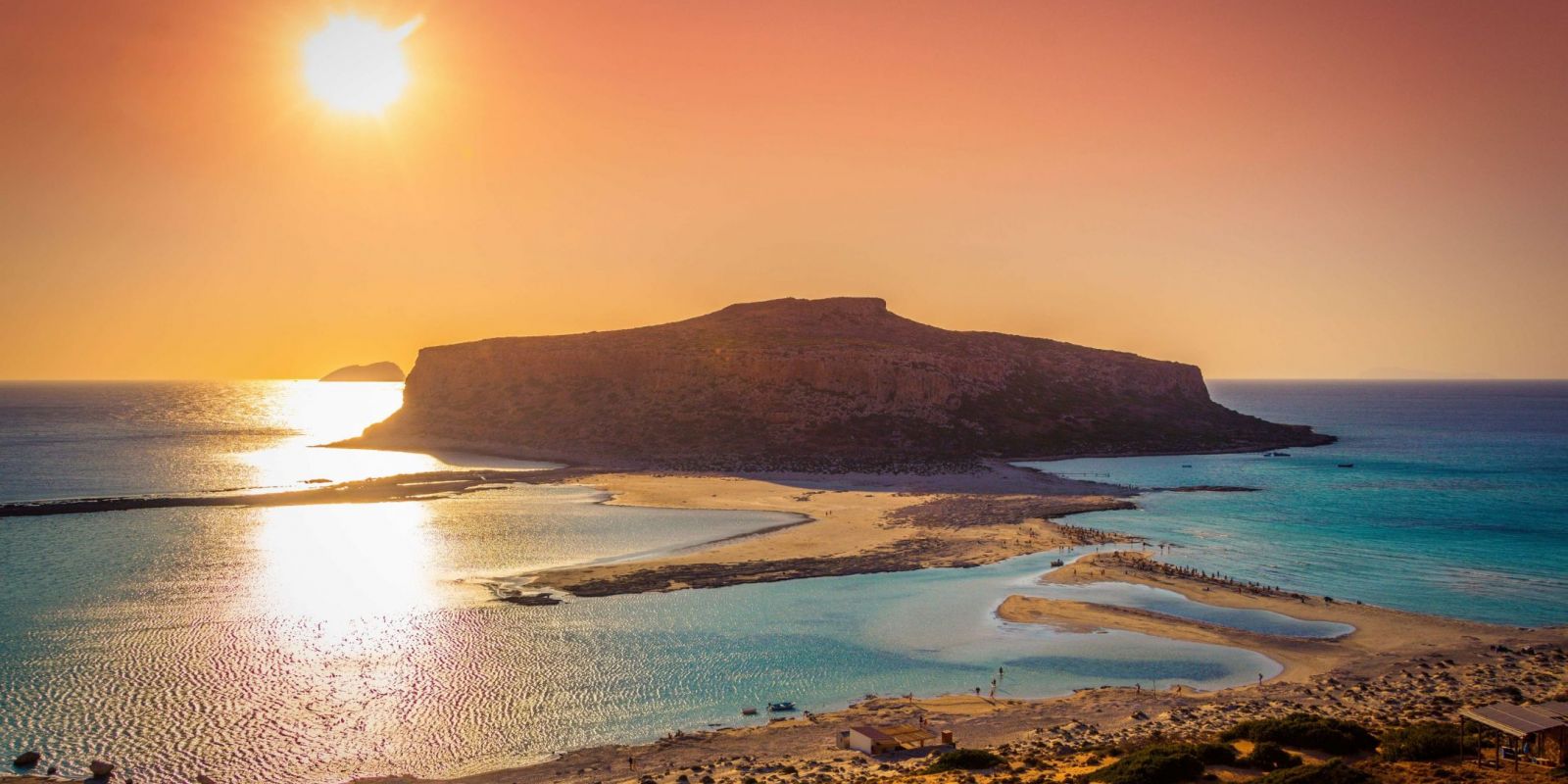
The shipwreck
The rusty shipwreck located next to the port of Gramvousa, has become a characteristic element of the area and part of its history.
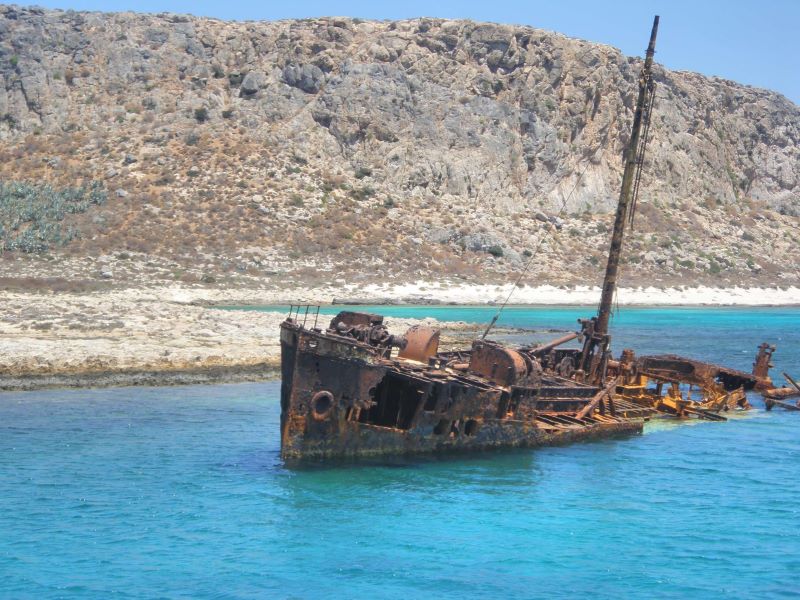
Τhe ship Dimitrios P that was 146 feet long, sailed on December 30 1967 from Chalkida, with 440 tons of cement, destined to North Africa. Due to bad weather conditions, it was forced to anchor in Diakofti Bay of Kythera.
On January 6th, sailed for its destination, but again encountered unfavorable weather conditions and was forced to change course to the west coast of Crete.
It anchored on the south side of the island Imeri Gramvousa at a distance of 200 meters from the shore and dropped both anchors.
Two days later, on January 8 the chain of the right anchor was cut and the captain tried to hold the ship, but with no success, so the ship agrounded on the left side and the engine room, flooded.
The captain ordered the ship to be abandoned and the crew remained in Imeri Gramvousa for 2 days, due to bad weather conditions. Eventually, the destroyer ship of the Greek Navy "IERAX", picked up the crew members and transported them safely to Souda.
The ship remained there, and became in time part of Gramvousa landscape, along with other shipwrecks that have been sunk centuries ago, around the island.
The ecosystem of Gramvousa
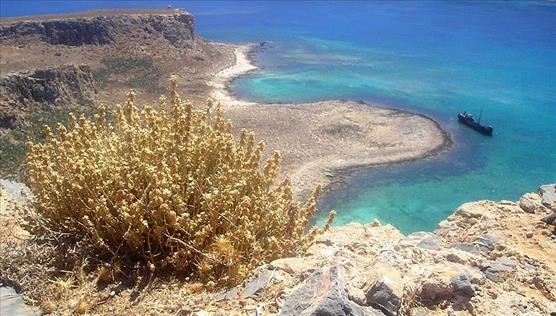 The landscape in Imeri Gramvousa is completely pristine and the view of Balos is fascinating. On the island you can find countless cacti and low vegetation, a landscape reminiscent of Africa!
The landscape in Imeri Gramvousa is completely pristine and the view of Balos is fascinating. On the island you can find countless cacti and low vegetation, a landscape reminiscent of Africa!The wider area of Gramvousa and the lagoon of Balos, is one of the most important habitats of the Eastern Mediterranean and one of the migratory routes of birds in the Mediterranean.
More than 100 species of birds and 400 species of plants are found on the peninsula and the islands of Gramvousa. The Mediterranean seal, gives birth in the sea caves of the area, while in the area, the sea turtle Caretta often comes to look for its food and to give birth.
Agria Gramvousa is located north at the end of Gramvousa Cape and any access by boat is quite difficult, due to the high rocks that surround the island like walls. The inhospitable island has been included in the Natura program, as well as the whole wider area, as it hosts gulls and various species of birds.